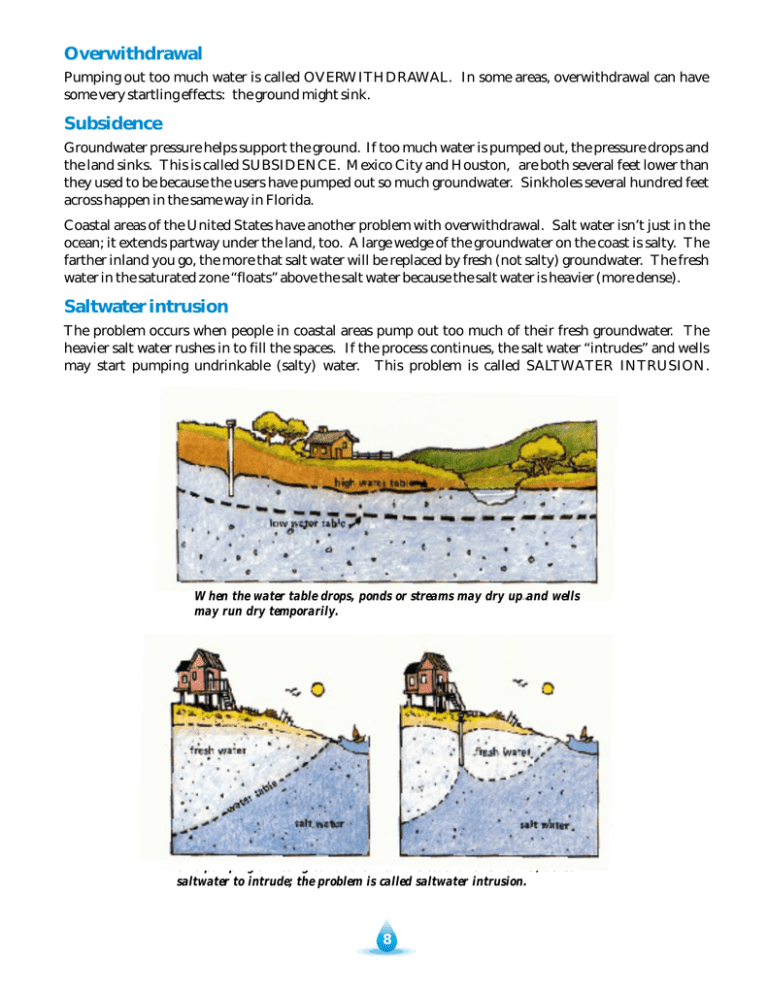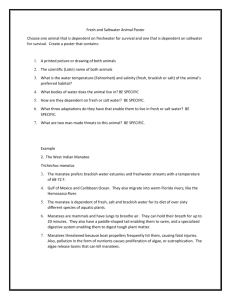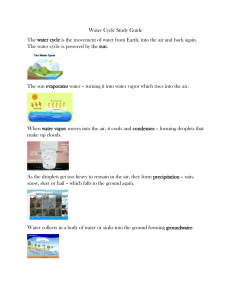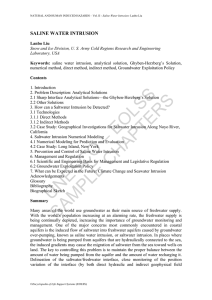Overwithdrawal Subsidence Saltwater intrusion
advertisement

Overwithdrawal Pumping out too much water is called OVERWITHDRAWAL. In some areas, overwithdrawal can have some very startling effects: the ground might sink. Subsidence Groundwater pressure helps support the ground. If too much water is pumped out, the pressure drops and the land sinks. This is called SUBSIDENCE. Mexico City and Houston, are both several feet lower than they used to be because the users have pumped out so much groundwater. Sinkholes several hundred feet across happen in the same way in Florida. Coastal areas of the United States have another problem with overwithdrawal. Salt water isn’t just in the ocean; it extends partway under the land, too. A large wedge of the groundwater on the coast is salty. The farther inland you go, the more that salt water will be replaced by fresh (not salty) groundwater. The fresh water in the saturated zone “floats” above the salt water because the salt water is heavier (more dense). Saltwater intrusion The problem occurs when people in coastal areas pump out too much of their fresh groundwater. The heavier salt water rushes in to fill the spaces. If the process continues, the salt water “intrudes” and wells may start pumping undrinkable (salty) water. This problem is called SALTWATER INTRUSION. When the water table drops, ponds or streams may dry up and wells may run dry temporarily. Overpumping of fresh groundwater near the coast allows heavier, denser saltwater to intrude; the problem is called saltwater intrusion. 8







